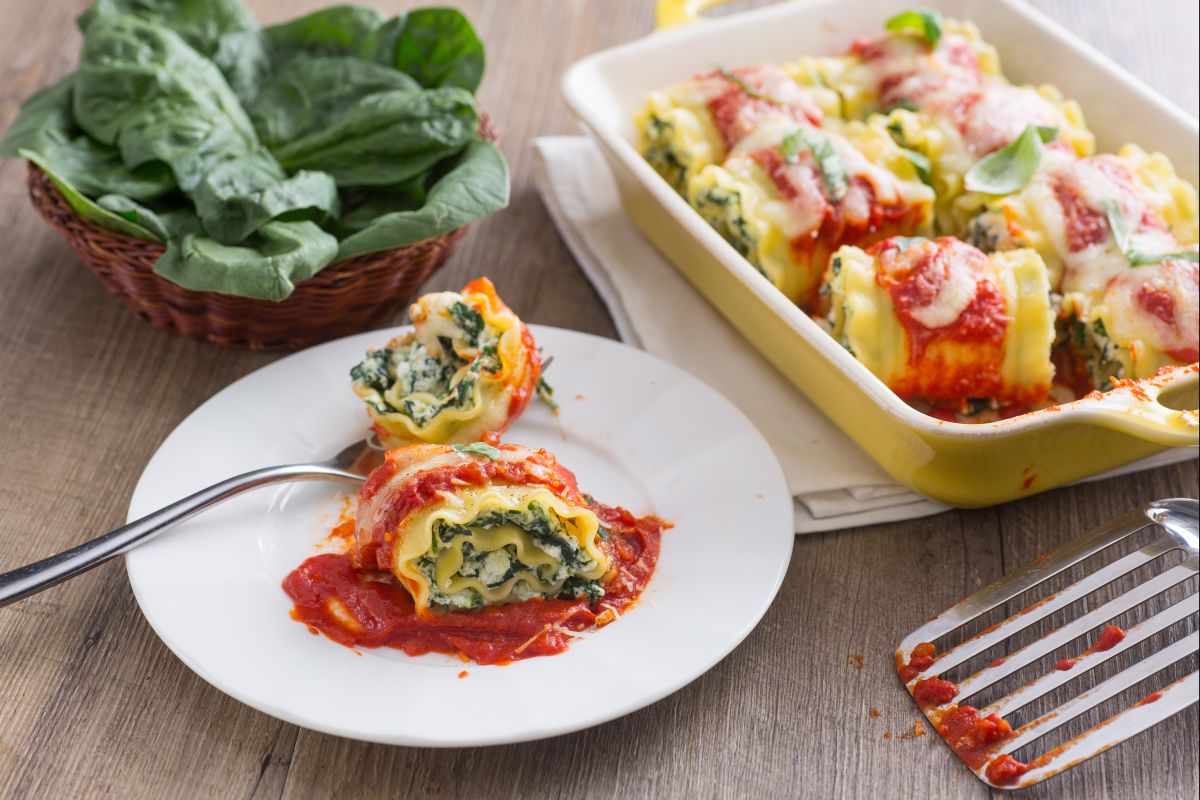Pesto and Zucchini Lasagna
- Easy
- 1 h 30 min
- Kcal 193

A good Sunday dish is one that brings family and friends together to enjoy a rich, tasty meal and one that also, in some cases, offers a nice, indulgent touch of abundance. There are 3 basic cornerstones of Sunday lunch: Lasagne, baked pasta, and, of course, the ever-popular gnocchi, eaten soft piping hot from the pot or given a quick au gratin crispy touch. It’s tough to choose, but today we’re going for a special take on the first option to make these lasagna rolls. These ricotta and spinach rolls are made with classic wavy lasagna sheets, the precursor to the lasagna we know today, made with water and remilled semolina flour and dating back to Roman times. This lasagna roll is the perfect Sunday dish as it gives a nod to ancient tradition while also offering a touch of modernity. What’s more, its single-portion format means you can combine the past with the future as you take your taste buds to a whole new world of flavor. Intrigued? Then let's get started!
Discover more delicious Lasagna recipes and elevate your cooking game!

To prepare the lasagna rolls, start with the sauce. Pour a little oil into a pot and let the onion sweat for 5-6 minutes over low heat, stirring occasionally 1. Pour in the tomato puree 2 and a pinch of salt and allow to reduce, covered with a lid, for around 20 minutes over low heat 3.

In the meantime, take another pot and heat a little more oil together with a peeled clove of garlic 4. Once this is hot, add the spinach 5 and a pinch of salt, and cover with the lid before leaving to cook for 4-5 minutes 6.

After this time, remove the garlic 7 and leave the spinach to cool for a few moments before chopping with a knife 8. Next, place it in a bowl along with the ricotta 9

and add the grated cheese 10, salt, pepper 11, and nutmeg 12.

Stir to combine 13. Slice the mozzarella 14 and place it on a tray lined with paper towel or a clean tea towel 15.

Now move on to the pasta. Place the wavy lasagna sheets into a pot containing plenty of salted water and cook until al dente 16. Then, drain them and place a tray lined with a cloth and leave to cool 17. Next, add the filling to the lasagna sheets, leaving ½ inch (1 cm) free around the edges 18,

and roll them up 19. Once all of your rolls are ready, pour around half of the sauce into a casserole dish 20, arrange the rolls on top 21,

and cover them with the remaining sauce 22. If it’s too dry, you can always dilute it with a little water. Next, cut the sliced mozzarella into sticks 23 and sprinkle over the lasagna, adding a sprinkling of grated cheese 24 to the mozzarella.

Bake in a conventional oven 25 preheated to 390°F (200°C) for around 10 minutes, followed by a few minutes under the broiler. Allow to cool for a minute before sprinkling with pepper and basil 26, and your lasagna rolls are ready to enjoy 27!